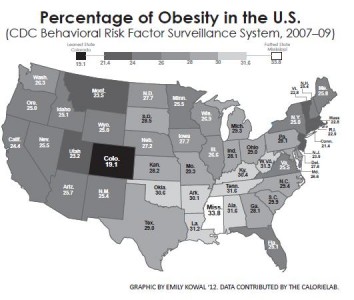 You could almost taste the irony at the second annual Staples Spectacular Student Challenge. Many of its 58 participants came armed with energy for the 12-hour task to solve a problem on a prevalent national issue. The aroma from one team’s Five Guys hamburgers overpowered the sweet smell of another team’s lightly powdered Dunkin Donut munchkins. French fries, candy, and sugary soft drinks were standard fare to keep the participants “nourished.” And then this year’s Challenge was announced: to design a persuasive campaign to convince the Westport community to follow a plan that encourages lifestyle changes and healthy living.
You could almost taste the irony at the second annual Staples Spectacular Student Challenge. Many of its 58 participants came armed with energy for the 12-hour task to solve a problem on a prevalent national issue. The aroma from one team’s Five Guys hamburgers overpowered the sweet smell of another team’s lightly powdered Dunkin Donut munchkins. French fries, candy, and sugary soft drinks were standard fare to keep the participants “nourished.” And then this year’s Challenge was announced: to design a persuasive campaign to convince the Westport community to follow a plan that encourages lifestyle changes and healthy living.
Director of Physical Education and Health David Gusitsch suggested the topic of obesity as a potential question because there’s lots of room in the question to respond in an interdisciplinary way. Trudy Denton, one of the organizers for the SSS, explained how people could approach the problem with various perspectives by evaluating it, quantifying it and ultimately persuading others.
Another facet the question was to relate it back to Staples’ school goal—to understand a local theme with much larger real-world implications and to work collaboratively using math, science, social studies, and English skills to find a solution.
THE PROBLEM
“It’s hard to quantify the effects [of obesity] and predict the results [of a proposed solution]. So many factors go into it,” said second year participant in SSS Eric Lubin ’11. For his team, Lubin’s role was to focus on predicting what effect the proposed and solution would have on obesity.
Ned Hardy ’13, who participated in SSS for his first time this year, likes the concept of the Challenge. “It is not often that you get to work with kids in your grade to solve a real life problem,” Hardy said. He continued to explain how obesity is a problem across America because we are a nation of consumers. “As much as we would like to think that we are all well-educated in some aspects, in other aspects I do not think that the nation is educated enough on the dangers of obesity,” Hardy said.
According to Clinical Nutritionist Alison Held of Healthful Direction, Westport offers a plethora of healthy resources. “Health is priority for many in this town,” she said. Obesity can lead to fatigue, high cholesterol, high blood pressure, cardiac problems, GERD, inflammation in the body, etc. To avoid obesity, she advises for people to learn healthy eating habits at a young age to bring with them into adulthood. “Reading ingredient labels, watching portion sizes, incorporating plenty of fruits and vegetables are all great things people can be doing to help prevent obesity,” Held said. “One should think about eating to live versus living to eat.”
He believes that obesity is not commonly discussed amongst members of the Westport community, but he questioned how although soda is not served in the school cafeterias, “how much better for you are the drinks that are served now?”
On the other hand, Marcus Russi ’13 does not believe that obesity is a problem in Westport at all. “The vast majority of the town is pretty physically fit and everyone keeps track of their diets,” Russi said. He believes that this is the case because Westport is a higher income community so there is access to healthier foods, that can sometimes be more expensive, and sports programs that people get involved in at an early age. “It’s important to learn to be healthy while you are young,” he said.
Josh Greenberg ’11 explained how based on the statistics that his group collected, obesity is not a very prevalent problem in Fairfield County. “But nationwide, it’s a pretty serious epidemic and an increasing problem,” he said. According to the World Health Organization, there are over one billion overweight adults globally, at least 300 million of them obese. But Connecticut was ranked the second least obese state in the country, according to the Trust for America’s Health and the Robert Wood Johnson Foundation with 21.4 percent of its population.
STUDENT SOLUTIONS
Some of the plans that were proposed at the SSS included providing a system so that people can track what they eat through smart phones and calorie counters, removing drinks that contain lots of high fructose corn syrup, implementing a soda tax, having local fundraisers that involve physical activities, and even a reward system in supermarkets for buying healthy foods.
“The hardest part was finding out what was possible to actually do and what you can make happen,” Greenberg said. Russi agreed. “It was hard to think of a solution that was creative, yet achievable at the same time. A big issue was that a lot of our possible plans required a lot of funding and/or time—we had to think of reasonable solutions that would show results,” he said.
Denton said that she would love to see some of the plans implemented locally after the winners are announced. Lubin explained how the project itself helps to spread awareness because “once people hear about the Challenge, what the question was, and listen to the presentations, they will know about the issue,” he said.
The top six teams of the twelve that participated in the Challenge will make a presentation to a panel of judges on April 26. $12,500 in scholarship money will be dispersed amongst the three teams that receive the highest scores.












































